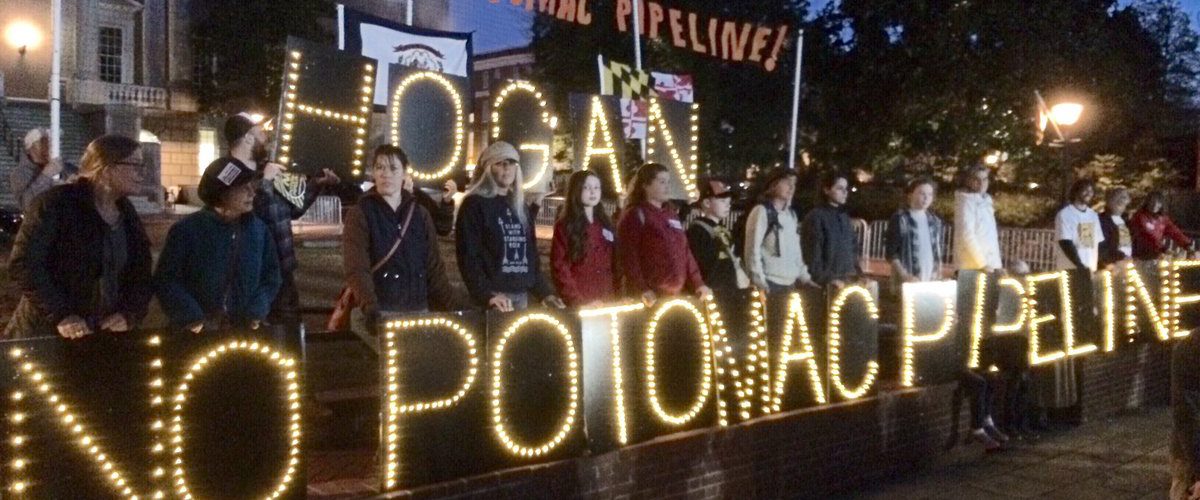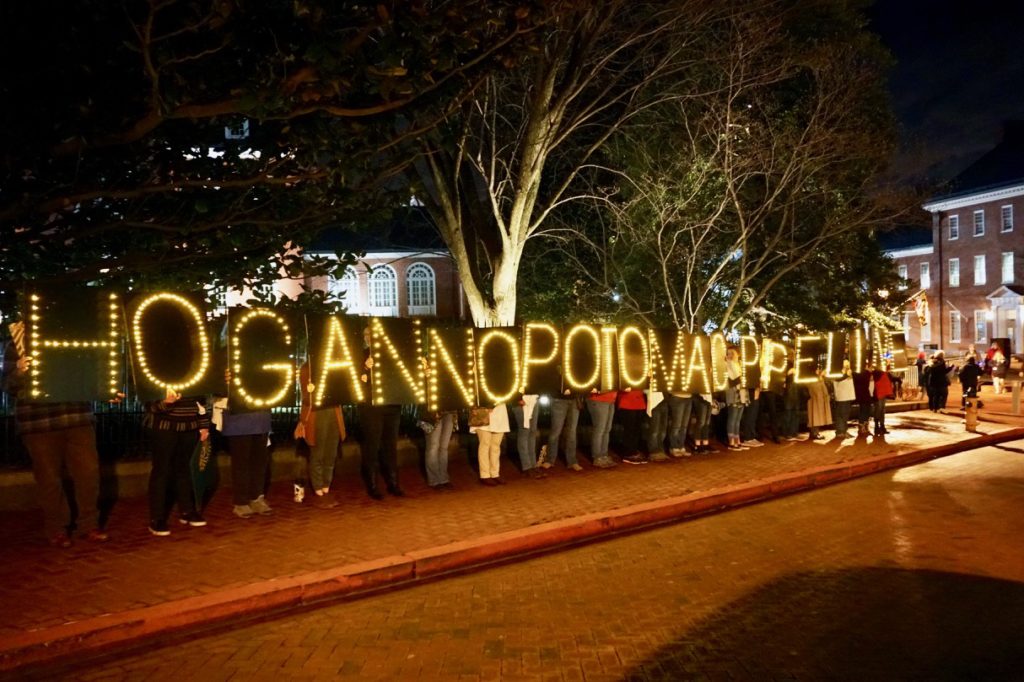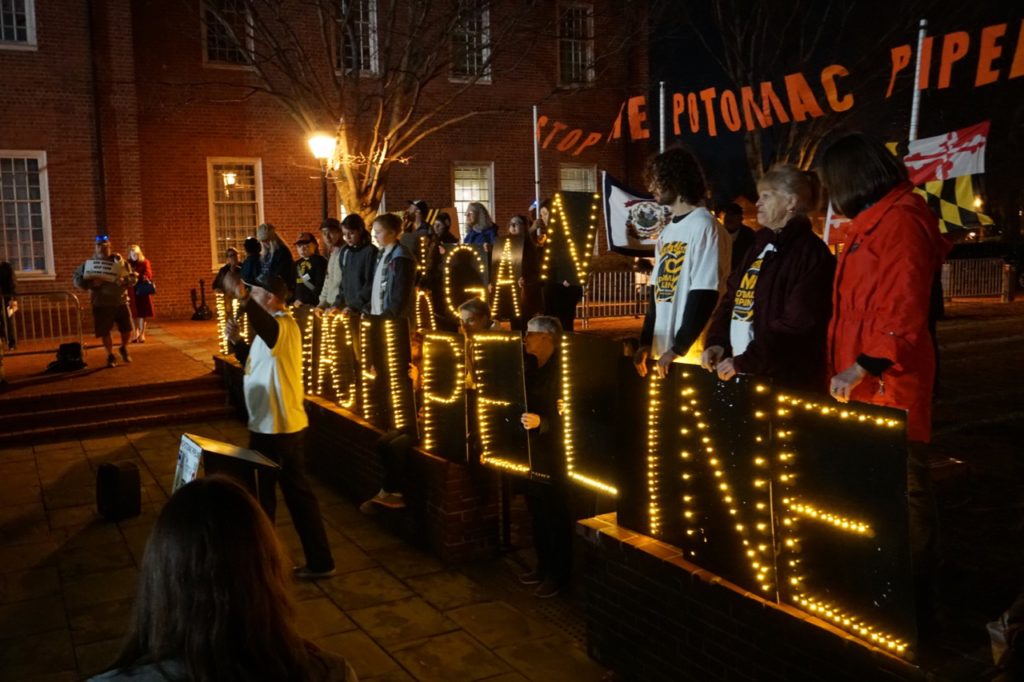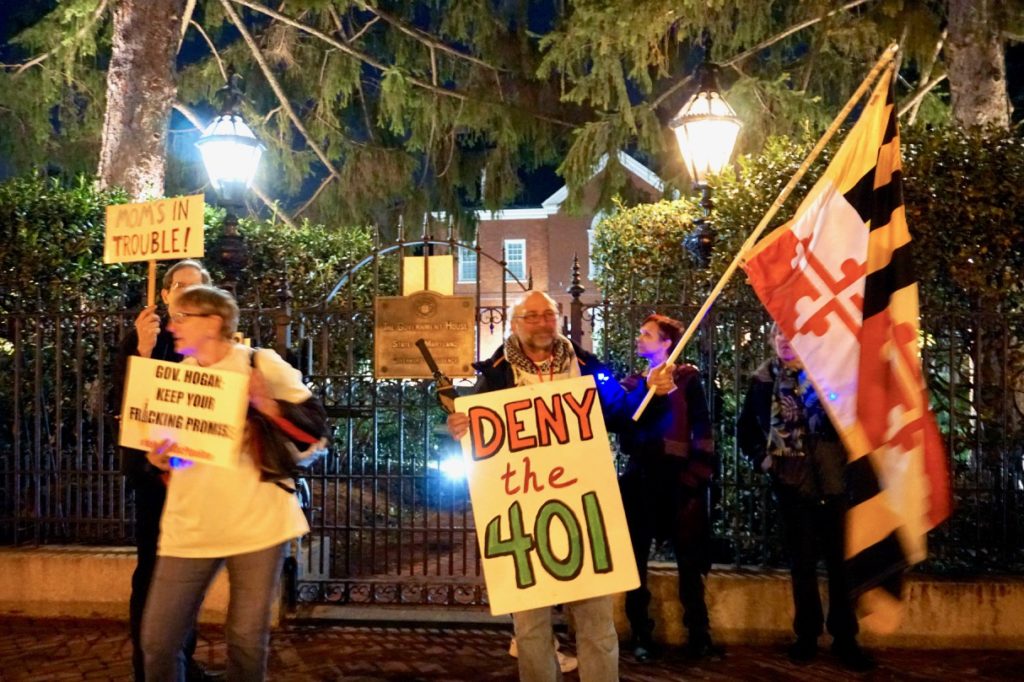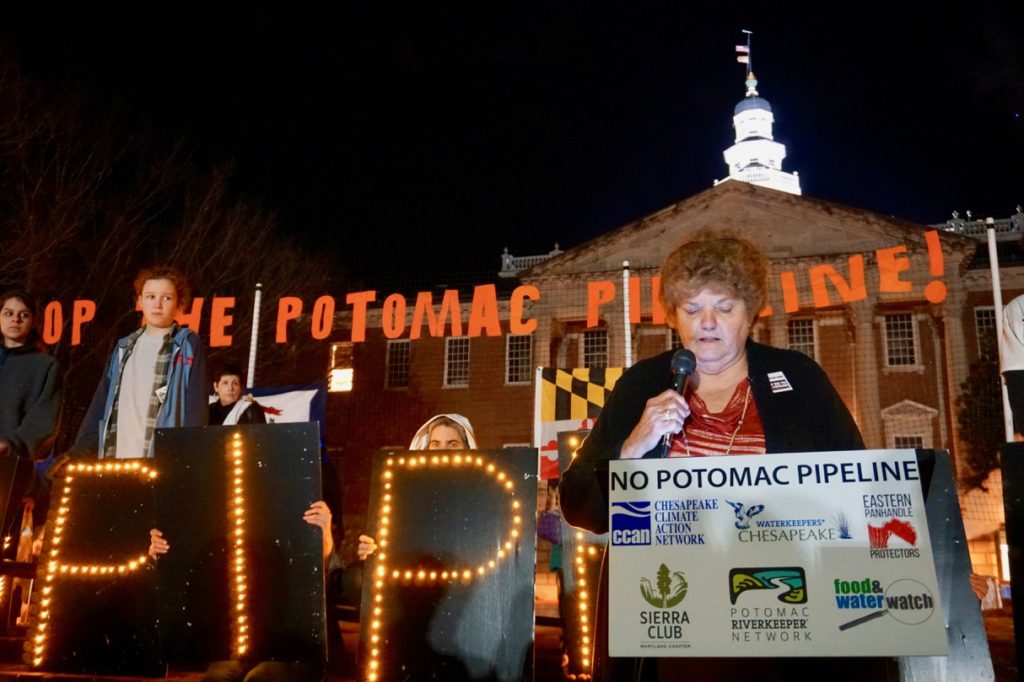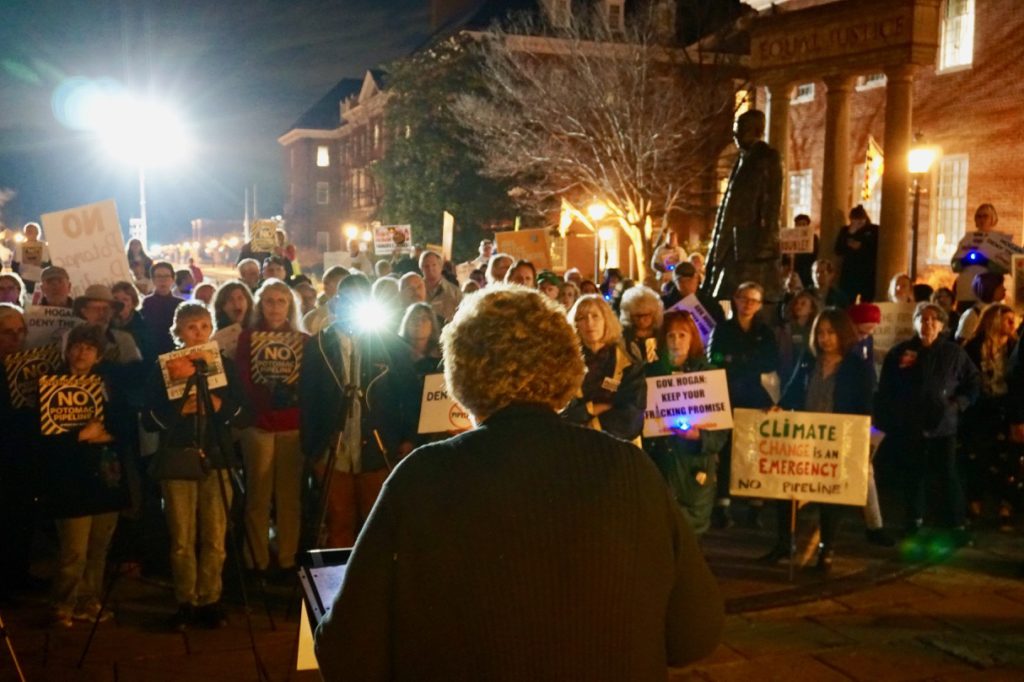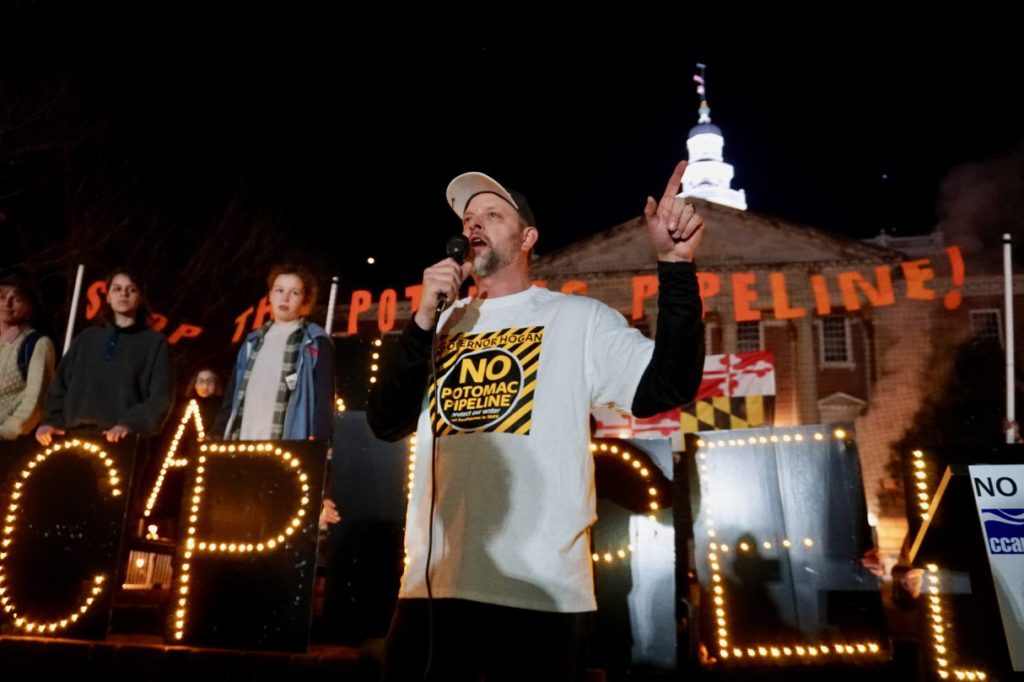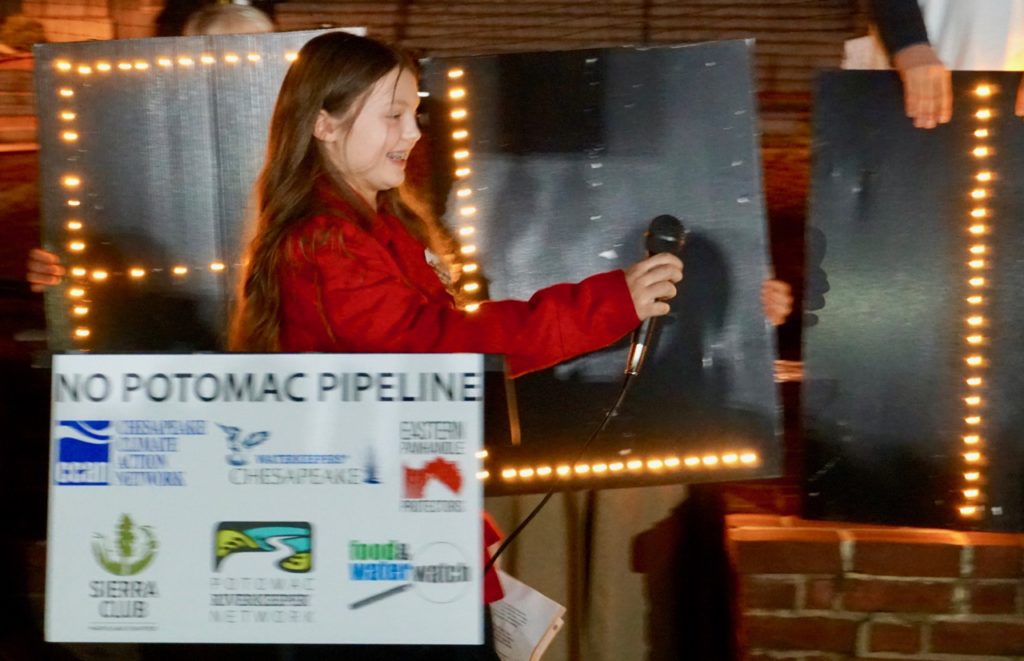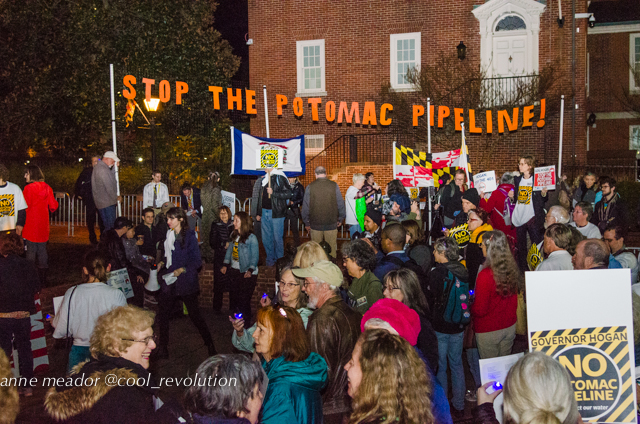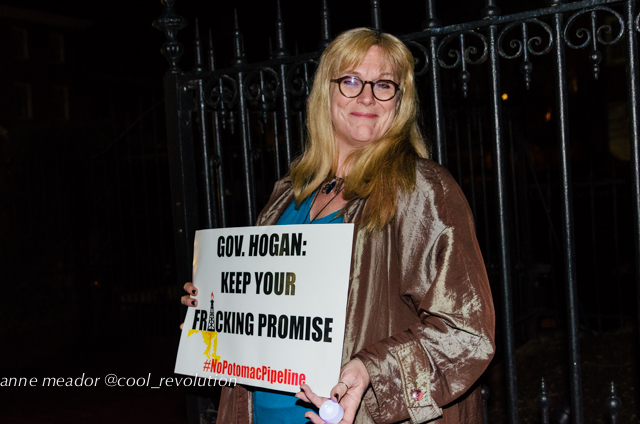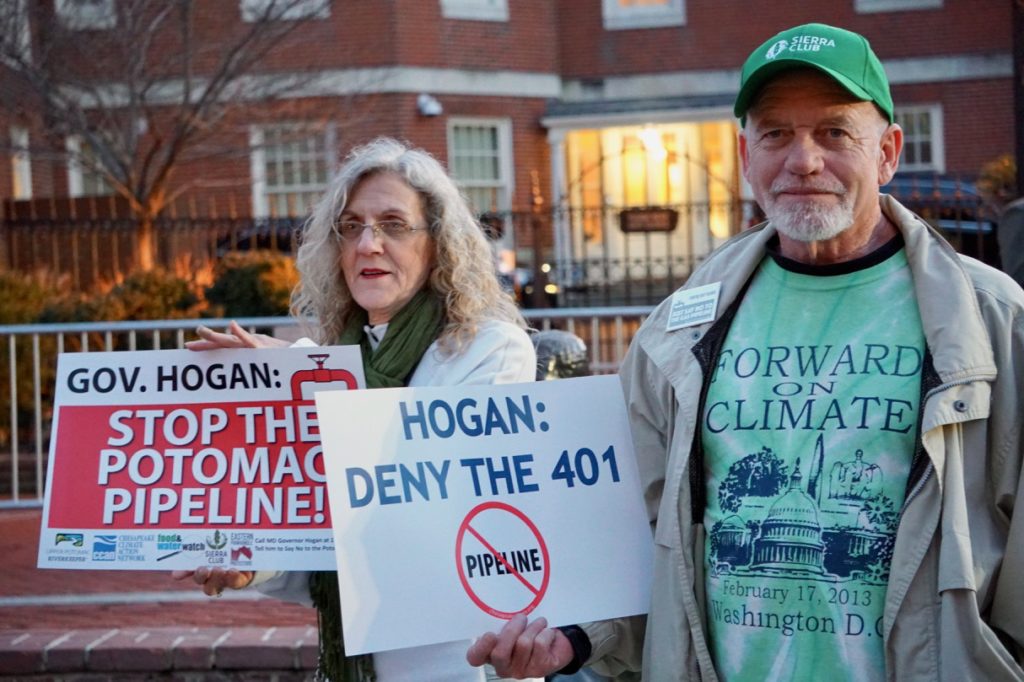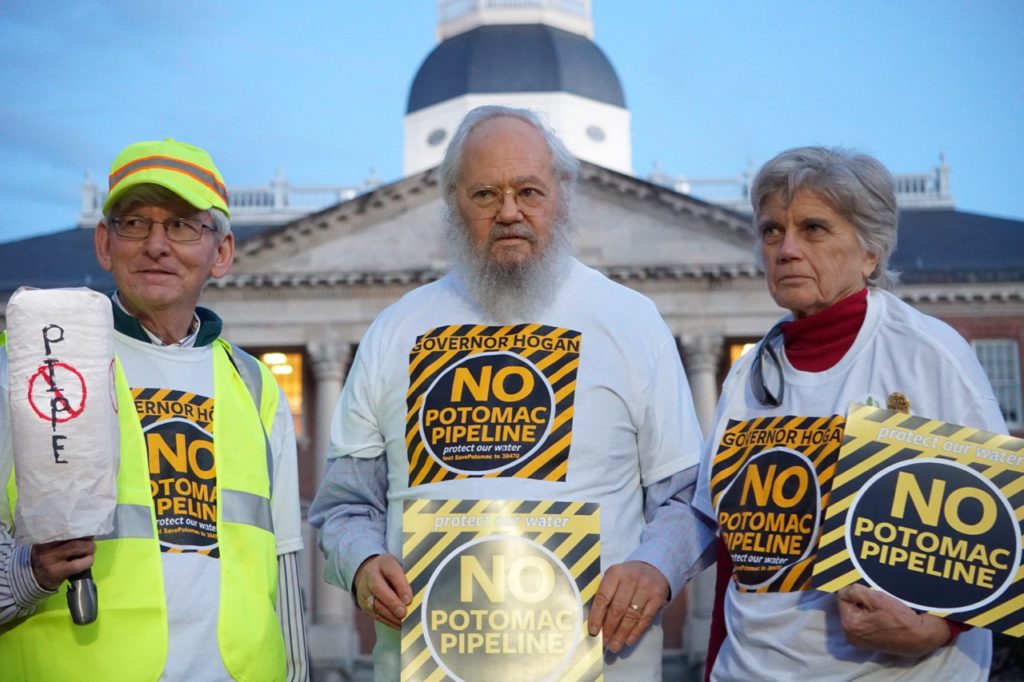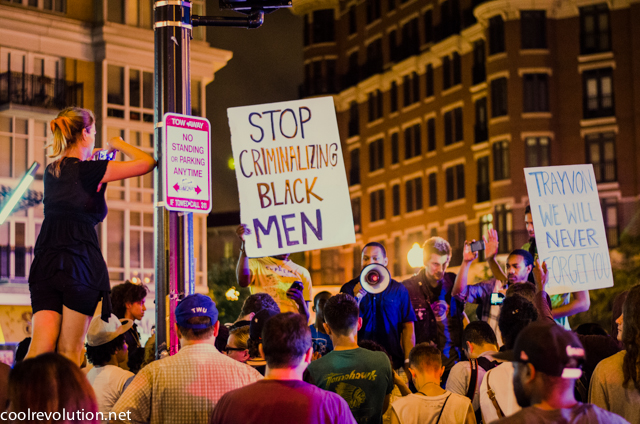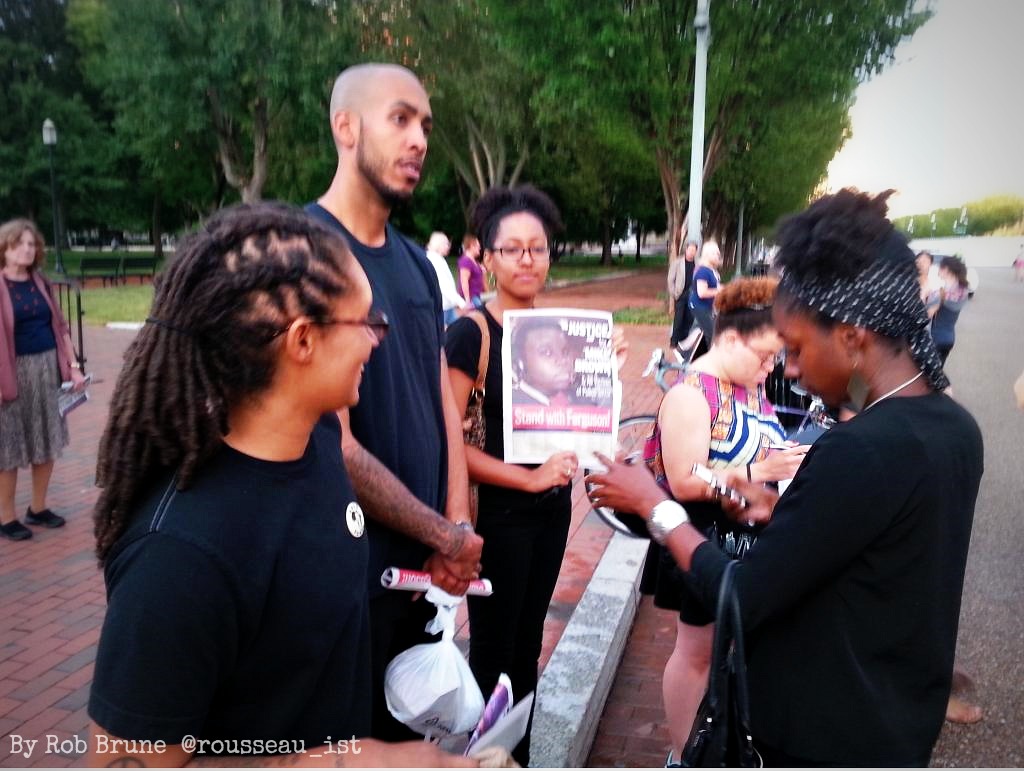Annapolis, Md. — Those opposed to gas infrastructure in Maryland have stepped up their campaign to influence Gov. Larry Hogan, and he may be feeling the pressure.
About 250 people rallied on Lawyer’s Mall in front of the Maryland Statehouse on the evening of February 15, then surrounded the Governor’s Mansion with signs, candles and light boards spelling out “Hogan, No Potomac Pipeline.” A bagpiper played and circled the mansion as protesters yelled, “No Potomac Pipeline!”
Many rally speakers warned about dangers posed by TransCanada’s Eastern Panhandle Expansion–the 3.3-mile pipeline that would traverse Maryland and bore underneath the Potomac River—and the Mountaineer Gas pipeline it would connect to in West Virginia. One by one they called on Hogan to stop the project.
“Governor Hogan must instruct Maryland Department of the Environment to finally take a close look at the depth of TransCanada’s threat to our drinking water,” said Wenonah Hauter, Executive Director of Food & Water Watch. “In allowing this pipeline to breeze through, he’s borrowing from Trump’s playbook and letting corporations profit while communities bear the harmful burdens.”
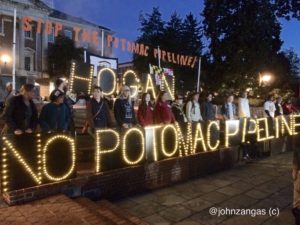
MDE has been under fire for conducting a weak review of the Potomac Pipeline under a general permit, rather than a more rigorous analysis of drilling under the Potomac River and cumulative impacts by invoking an individual permit review, also known as a 401 certification.
With the proposed merger of Washington Gas and Light’s parent company, WGL Holdings with AltaGas, Ltd., Hogan may direct more than $100 million toward the expansion of natural gas service in Maryland. It would mean many more gas pipelines and associated infrastructure throughout the state.
“Governor Hogan is collaborating with Canadian companies to push dangerous fracked-gas pipelines where people don’t want them, and he’s keeping the people of Maryland in the dark,” said Maryland Sen. Richard Madaleno (D-18).
Many who worked long and hard to achieve a legislative ban on fracking—which Hogan signed—feel that he is violating the spirit of that ban now. Gas infrastructure in Maryland will cause some of the same harms to health, safety, the environment, and air and water quality that fracking does, they believe. And, more pipelines drive increased fracking in Appalachia, upstream from Maryland, and has had devastating effects there.
Many rural communities in Pennsylvania are now without water after ten years of fracking, said Deirdre Lally, who grew up in the “fracking fields” and is now an organizer with Maryland Sierra Club. Pipelines can also contaminate water. With construction of Energy Transfer Partner’s Mariner East 2 pipeline in Pennsylvania this year, 90 sources of drinking water have been spoiled.
Downstream, the Potomac Pipeline will feed the Mountaineer Gas distribution line in the Eastern Panhandle of West Virginia. Tree clearing has already started, even though the Potomac Pipeline isn’t yet permitted.
Jessie Ward, who lives just outside of Shepherdstown, is afraid for the safety of her family. The pipeline will be buried only 500 feet from her house, well within the “blast zone” of an explosion.
“It scares me. I have a one-year-old daughter and a five-year-old son, and I am not comfortable having my family live so close to a pipeline,” she said. To Gov. Hogan, she says, “Please protect his Marylanders, protect his neighbors in Pennsylvania and West Virginia, and stop the Potomac Pipeline.”

Ivy Hale, an 11-year-old environmentalist, wants to conserve the water quality of the Potomac and the beauty along the C&O Canal. “I am worried about a lot of things, and this pipeline is one of them,” she said. She asked the governor think about the people and animals that would be affected by the project.
Earlier in the day, Maryland Department of the Environment (MDE) Secretary Ben Grumbles sent a letter to the U.S. Army Corps of Engineers (USACE). In it, he requests that USACE hold off on a determination on TransCanada’s application, because “MDE has identified potential water quality and public interest factors that may justify the impositions of special conditions in the Corps’ authorization” under the regional blanket permit.
MDE spokesperson Jay Apperson would not elaborate on what prompted the request, nor what special conditions might be proposed.
Special conditions could include conditions related to water quality and site restoration, according to USACE Program Manager Donald Bole. “We’re specifically looking at the impacts to streams and wetlands. That’s the scope of our permit review,” he said. “There is an inadvertent return plan that we’ll most likely include a special condition for.”
The USACE is required to make a decision on the federal permit for a project 90 days after FERC issues its Environmental Assessment, which, in the case of the Eastern Panhandle Expansion, was Jan. 26. Bole said that he didn’t anticipate that imposing special conditions on the permit would require additional time.
Grumbles’ letter may signal that MDE intends to grant a state water certification for the project but wants to address concerns raised in public commentary—or at least appear to address them. If it does, then Hogan may be feeling the heat at a time when he is initiating a campaign for re-election.
Thursday’s protest was organized by several environmental organizations, including Chesapeake Climate Action Network, Eastern Panhandle Protectors, Upper Potomac Riverkeeper, Potomac Riverkeeper Network, Waterkeepers Chesapeake, Sierra Club and Food and Water Watch.
Earlier, another gas infrastructure protest on Lawyer’s Mall also targeted the governor. It was the 34th week in a row that the Cove Point community and their supporters have rallied there demanding a safety study to assess the risks of a LNG export terminal in Lusby, Md.

